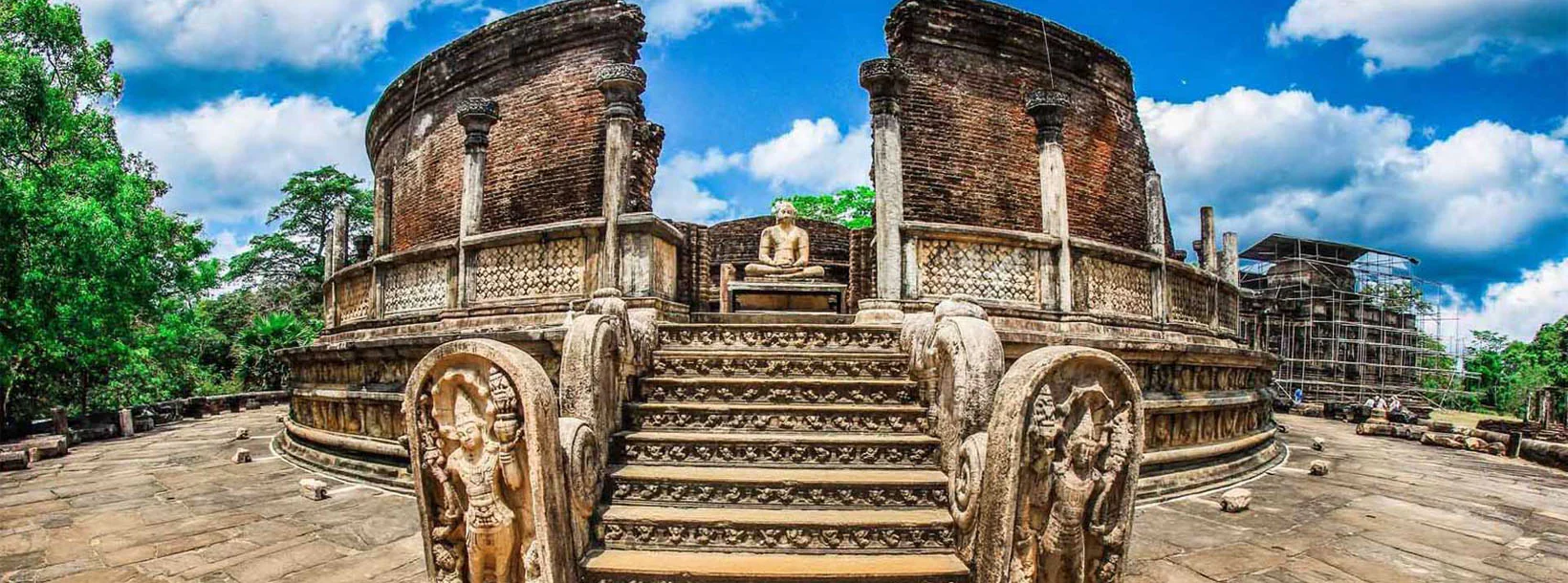
Polonnaruwa City
Polonnaruwa, a UNESCO World Heritage Site in Sri Lanka, was the country's medieval capital (11th-13th century). Renowned for its well-preserved ruins, including the iconic Gal Vihara statues, it showcases impressive architecture, reflecting the grandeur of the ancient Sinhalese civilization.
King Parakramabahu
King Parakramabahu I, who reigned over Sri Lanka from 1153 to 1186 AD, left an indelible mark on the island's history, particularly in the city of Polonnaruwa. His legacy is synonymous with architectural brilliance, cultural prosperity, and a commitment to social welfare.
Renowned for his ambitious projects, King Parakramabahu I transformed Polonnaruwa into a thriving city. The Parakrama Samudra, an immense reservoir he constructed, stands as a testament to his engineering prowess and dedication to sustainable development.
The cultural renaissance under his rule is exemplified by the Gal Vihara, a rock temple adorned with four colossal Buddha statues. This site attests to the artistic zenith achieved during his reign, attracting scholars, artists, and poets to Polonnaruwa.
Beyond monumental structures, King Parakramabahu I prioritized social welfare, implementing policies to alleviate poverty and ensure equitable resource distribution.
In the modern era, the King Parakramabahu Hotel pays homage to this historical figure. Nestled in the cultural triangle, it offers guests a luxurious experience amidst the echoes of the past, ensuring that the spirit of King Parakramabahu I lives on. His reign remains a pivotal chapter in Sri Lanka's rich history, captivating the imagination with its enduring impact on architecture, culture, and social welfare.
About Polonnaruwa District
Polonnaruwa is the 2nd largest city in north central province in Sri Lanka. The ancient city of Polonnaruwa has been declared a World Heritage site by UNESCO Polonnaruwa has a great history of conquest and struggle behind it and rightfully forms the third element in the Cultural Triangle. Located about 140 kms north east from Kandy,Polonnaruwa offers hours of endless pleasure for history and culture lovers, as there are numerous sights of significance.
Much of the physical ruins standing today are credited to King Parakrama Bahu I who spent many royal resources on town planning, including parks, edifices, irrigation systems and so on. The period of his rule is considered a golden age where the kingdom thrived and prospered under a visionary ruler. The Parakrama Samudra is a mammoth tank and named after its patron. The popular kings Royal Palace, the Audience Hall encircled by beautifully carved stone elephants and the Bathing Pool reflect the superior engineering capabilities of the time.
About North Central Province
North Central Province which is the largest province in the country covered 16% of total country's land area. North Central Province consist two districts called Polonnaruwa and Anuradhapure. Anuradhapura is the largest district in Sri Lanka. Its area is 7,128 km².
North Central Province has numerous potentials for Investors to start their Businesses, especially Agriculture, agro based industries and Livestock sectors. More than 65% of North Central Province's people depend on basic Agriculture and agro base industries. NCP also called "Wew Bendi Rajje" because there are more than 3,000 medium and large scale tanks situated in the province. Sri maha bodiya, Ruwanweli seya, Thuparama dageba, Abayagiri Monastry, Polonnaruwa Rankot wehera, Lankathilake are scared





















